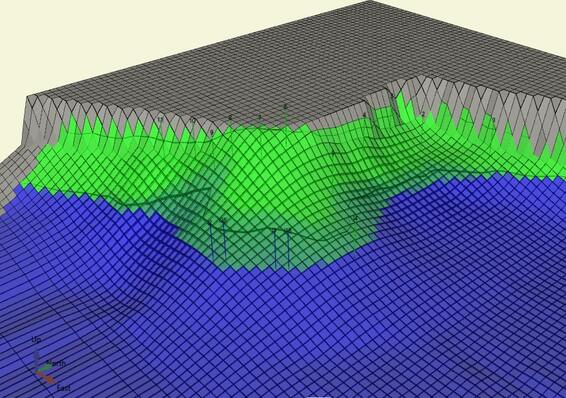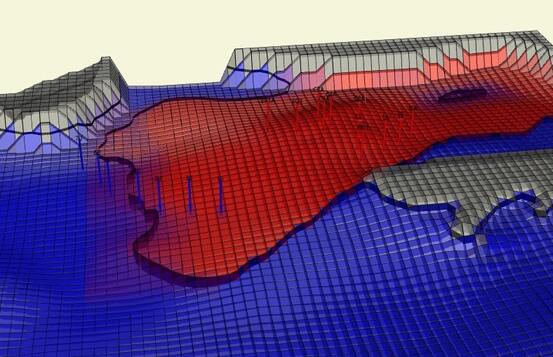Success Stories
Overnight Study Black Widow
Gemini received a late PM call from a client in need of a go/no go answer for a board meeting the next morning. The first exploration well drilled encountered only half the net feet of pay anticipated and the client was unsure whether to abandon the reservoir or not.
Overnight we built and history matched a model of the reservoir and ran a variety of what ifs to perm, aquifer strength, geology and contactsto determine if the reservoir would be economic to produce.
Without the results from the model the reservoir would have been abandoned.With over 600K per day in rig fees on the line and a quick answer required, the next morning we presented our results showing 9 out of 10 cases were still very economic. 15 years later and the reservoirs continues to profitably produce.


Worst Case Discharge
At Gemini we are experts on working with regulatory submittals in shelf to ultra deep water GOM assets. Every well permitted in federal US leases since 2011 has a Gemini WCD model
Gemini was the only commercial firm hired by the US government to calculate the official worst case discharge rate for the deep water horizon spill in 2010.
Since then Gemini has performed over 100 unique WCD studies to submit to the federal government for permitting maximum WCD rate, burst/collapse pressures at the shoe and mud line, and cap burst pressures.
We know how to build models to government standards and to date have a high success rate getting WCD permits issued. Since the government uses our software the models can be submitted directly to BSEE and BOEM engineers who use our tools and work flows, allowing a streamlined work flow.
Tight Horizontal Staged Frac Development
Devon Energy planned to place a series of horizontal staged fracture wells inside an existing field of low rate vertical producers.
To understand the economics of the wells before they were drilled and millions were spent, Gemini worked together with Devon engineers to history match the reservoir and determine optimal well positions and fracture spacing to maximize recovery and NPV.
After history matching the existing wells to present time, we placed simulated horizontal staged fracture wells into the reservoir and determined them to be economic with longer laterals and fewer staged fracs as the rock has high enough permeability to drain volume in between fractures with larger spacing.


PUD Certification
With the downturn in Oil and Gas prices starting in late 2014 the industry was hit hard. Always looking for a silver lining Gemini realized in any market there is always a buyer looking to acquire assets but only if they could get the reserves certified for their bank loans. By performing simulation studies we are able to history match the reservoir to present conditions and better predict future performance. We pass our models to reserve certification firms that use our software to justify PUD and probable reserves that cannot be justified by conventional decline curve analysis techniques.
In one study we found that due to strong aquifer and injection support wells that showed linear decline with decline curve analysis would actually be strong performers with a long plateau period before declining. This insight increased the present net value of the asset and the client was able to purchase a non working interest in the asset.
Gas Storage
Gas Storage reservoir can often be the most challenging to model properly. Often initial conditions are difficult to come by as original field data is scarce, and the model needs to accurately hit each peak and low volume over many cycles. Fortunately Gemini has become an expert in gas storage studies over the years helping clients understand their storage fields.
In one study a client thought gas was escaping through a small throat connecting their higher permeability reservoir with a lower permeability neighbor next door. Simulation of the storage field inferred the location and leak rates over many years, and changes in gas composition and pressures observed in the low permeability neighbor were matched. Our recommendation to the client was to inject water into the throat effectively sealing off the gas storage reservoir from the neighbor. This reduced gas losses from 5% per year to less than 0.5% within 2 years.
In other applications in gas storage reservoirs with large aquifer support 2-5% of injected gas is lost to the aquifer each year, even after many years of gas cycling. By careful placement of down dip water injection wells and water injection during the summer months when the reservoir pressure is high gas losses to the aquifer can be reduced from 2-5% to less than 1%.


Large Models Built and Results Achieved in Record Time
At Gemini our tools are routinely used to build models of some of the larger assets worldwide. In the application shown here the reservoir had 175 wells, 24,750 re-completions, 70+ years of history, and 128 compartments in 20 producing horizons. The model was built in record time using proprietary tools and work flows including automatic import of maps from common seismic and geologic packages, automatic interpretation of electronic map contours, automated import of multiple wells and perforation histories, and run times as much as 50% faster than a comparable model created in our competitor software suite .
The study was completed in less than 20% of the time required in our competitor software, and significant bypassed proved and possible reserves more than doubling the NPV of the field were identified.